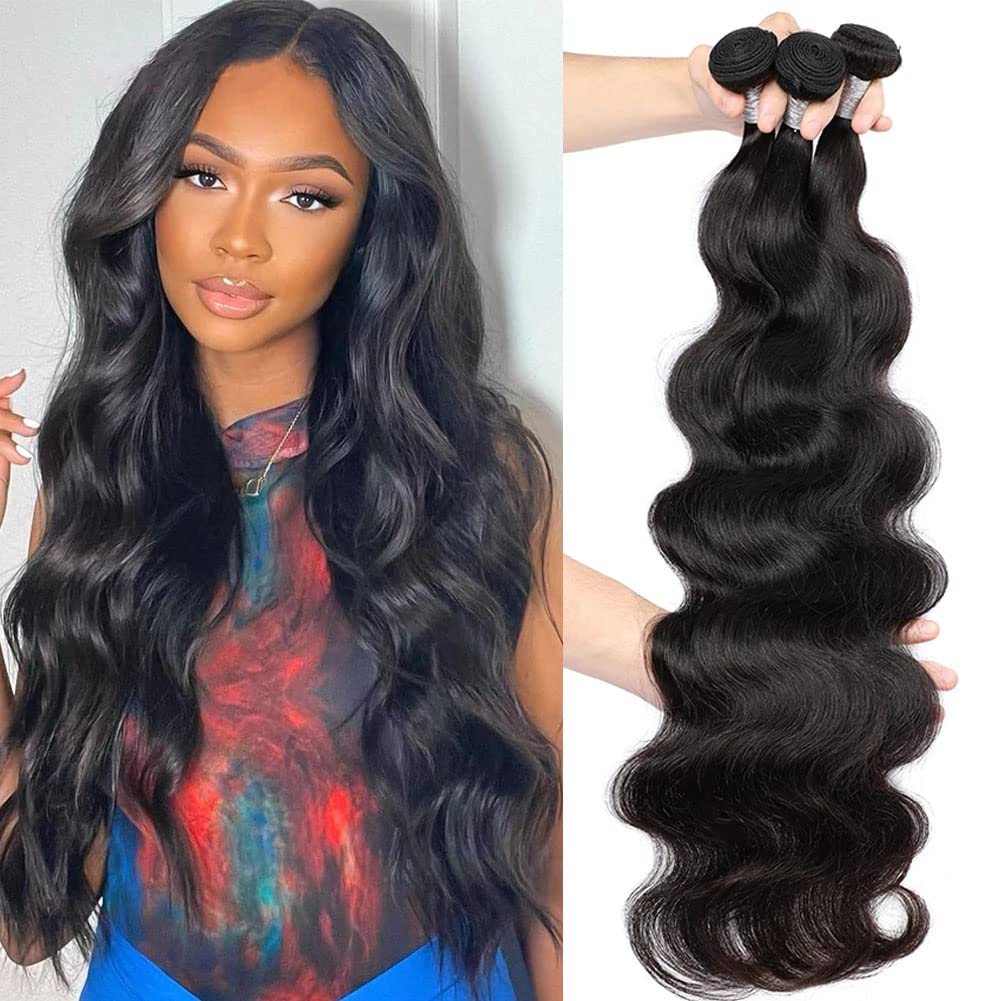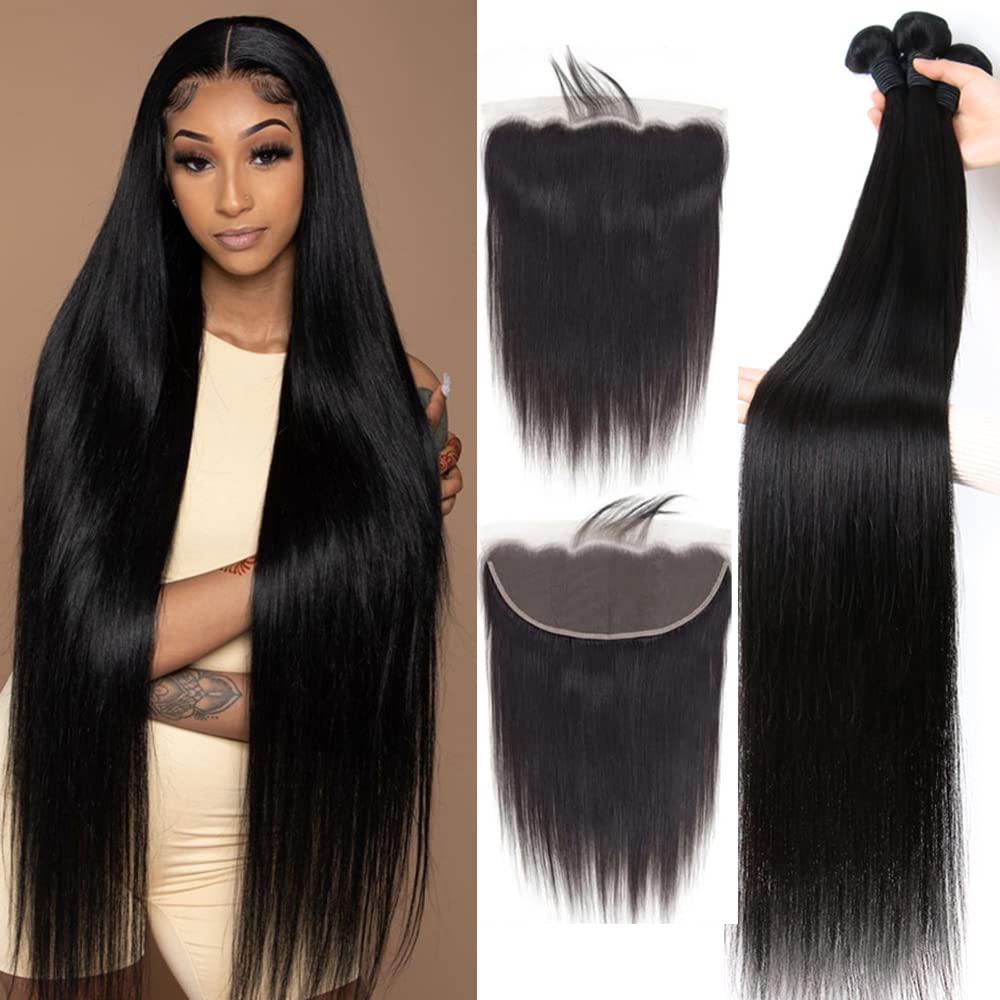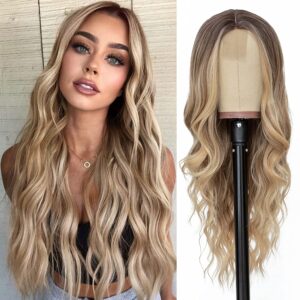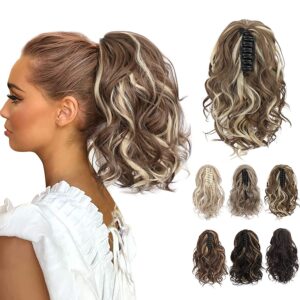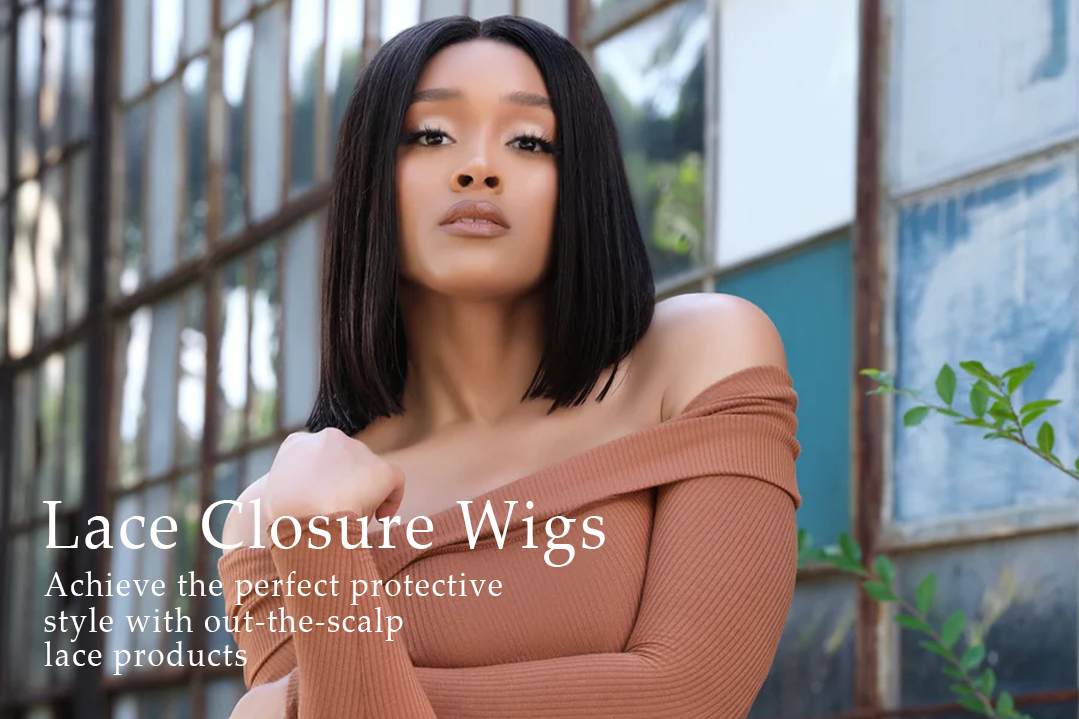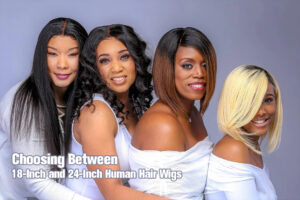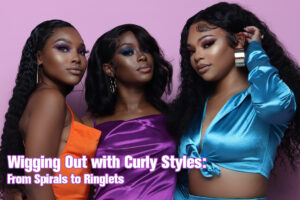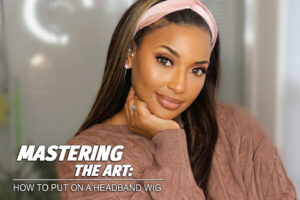What is a 4×4 Lace Closure Wig?
4×4 lace closure wig is a type of wig that features a 4×4-inch square-shaped piece of lace fabric with hair strands attached to it. This lace closure is typically positioned at the top or front of the wig, allowing for a natural and seamless appearance at the parting or hairline.
Here’s a breakdown of the key components of a 4×4 lace closure wig:
Lace Closure
The central element of the wig is the 4×4-inch lace closure. This lace is made from a delicate and sheer material that resembles the scalp when worn. It can come in different types, such as Swiss lace or HD (high-definition) lace, known for their transparency and natural look.
Hair Attachment
Strands of hair, which can be either human hair or synthetic hair, are meticulously hand-tied or machine-sewn onto the lace closure. The quality of the hair used in the closure can vary, with human hair being more versatile and natural-looking.
Versatility
4×4 lace closure wigs are known for their versatility. The wearer can part the hair in various directions within the 4×4-inch lace closure area, creating different hairstyles and parting styles.
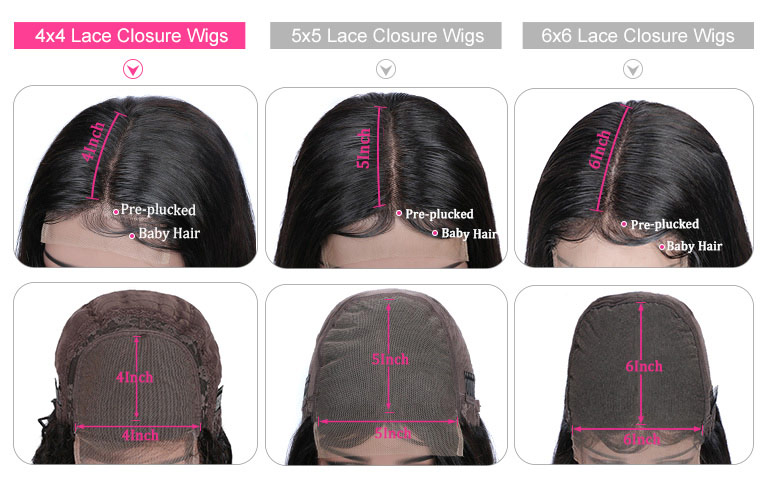
Natural Hairline
When properly installed, the lace closure creates an undetectable and natural-looking hairline. This is achieved by customizing the closure to match the wearer’s skin tone and by plucking or tweezing some hair from the closure’s edges to mimic the appearance of natural baby hair.
Closure Installation
The 4×4 lace closure is typically installed at the front of the wig cap, allowing the wearer to blend the wig seamlessly with their natural hairline. It can be glued, sewn, or secured using wig adhesive for a secure fit.
4×4 lace closure wigs are popular because they provide a realistic appearance, making it appear as if the hair is growing directly from the scalp. This type of wig is commonly chosen by individuals looking for a protective style that offers flexibility in parting and styling. It’s important to note that while 4×4 lace closure wigs offer a natural look, proper installation and maintenance are crucial to achieve the desired effect and longevity of the wig.
Types of Hair Used in 4×4 Lace Closure Wigs
4×4 lace closure wigs are available in various types of hair, with the choice primarily between human hair and synthetic hair.
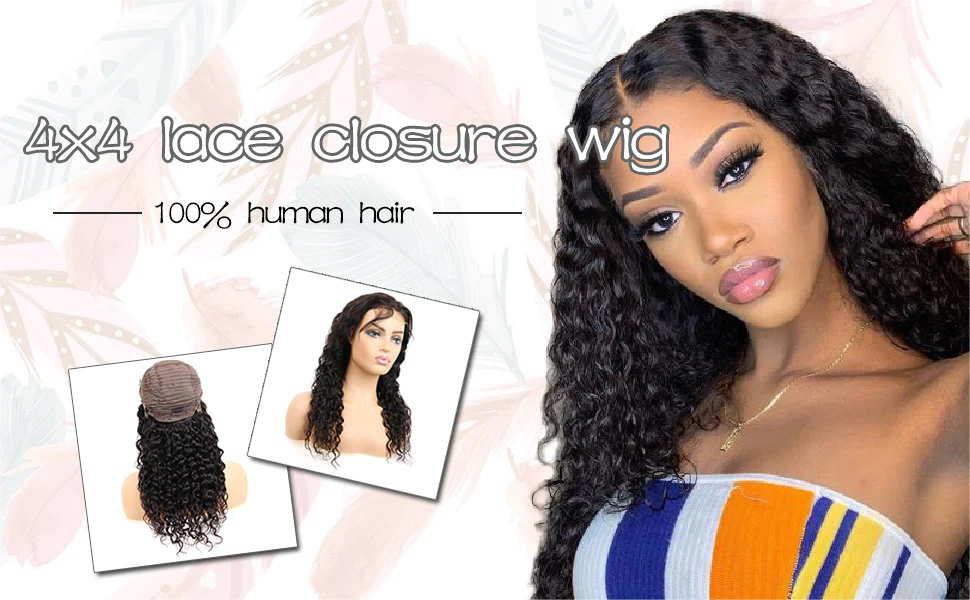
Human Hair
Human hair is the most coveted choice for 4×4 lace closure wigs due to its natural look and versatility. It can be further categorized into:
Virgin Human Hair
Unprocessed hair that maintains its natural color and texture. It can be styled, colored, and treated like one’s natural hair.
Remy Human Hair
Collected with hair cuticles intact, ensuring minimal tangling and a smoother appearance.
Non-Remy Human Hair
Hair without aligned cuticles, often chemically processed to prevent tangling. It may require more maintenance.
Synthetic Hair
Synthetic hair is made from synthetic fibers and is more budget-friendly. It’s pre-styled and retains its shape well but lacks the natural texture and versatility of human hair.
The choice between these two types depends on factors like budget, desired look, and maintenance preferences. Human hair offers a more authentic appearance and styling options, while synthetic hair provides convenience and affordability.
Choosing the Right Wig Density for Lace Clousure Wig
What is Wig Density?
Wig density refers to the thickness or fullness of the hair on a wig. It measures the amount of hair strands attached to the wig cap per square inch. Wig density is a crucial factor in determining how natural and voluminous a wig will appear when worn. Lower density wigs have fewer hair strands, resulting in a lighter, more natural look, while higher density wigs have more hair, creating a fuller and more glamorous appearance. Choosing the right wig density is essential to achieve the desired hairstyle and ensure the wig complements the wearer’s facial features and personal style.
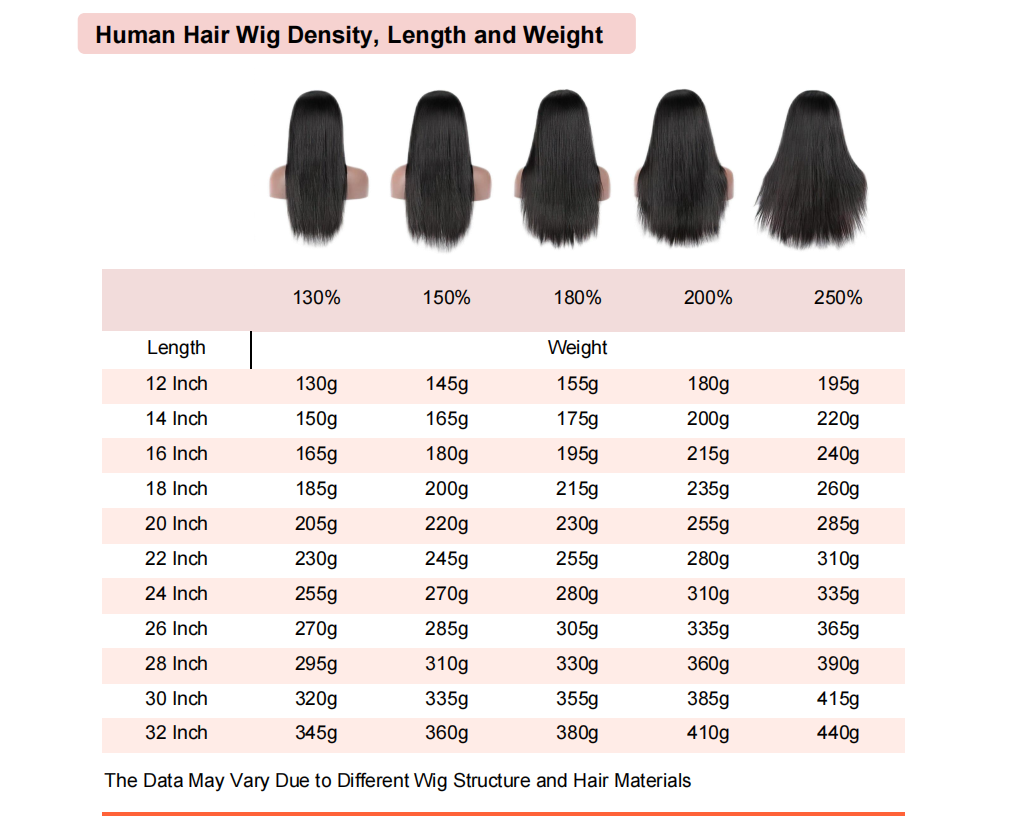
Factors to Consider When Selecting Density
Natural Look
Matching the wig density to your natural hair or the look you desire is crucial for a convincing appearance.
Face Shape
Different face shapes may benefit from varying wig densities to enhance facial features and proportions.
Hair Texture
Curly and straight hair may require different densities to achieve the desired volume and shape.
Lifestyle
Consider your daily activities and comfort; lower density wigs are lighter and more breathable for extended wear.
Personal Style
High-density wigs offer a dramatic effect, while lower densities provide a subtler, more casual appearance.
Maintenance
High-density wigs may require more care and styling to maintain their fullness.
Budget
Dense human hair wigs are often more expensive due to the increased amount of hair used.
Balancing these factors ensures the wig density complements your overall look and lifestyle.
How to Achieve a Natural Look With the Right Density
Select the Appropriate Density
Choose a wig with a density that matches your natural hair or desired look. Consider factors like face shape, hair texture, and personal style.

Customize the Hairline
Pluck or tweeze a few hairs from the wig’s front hairline to mimic natural baby hairs. This softens the hairline and makes it look less uniform.
Blend with Natural Hair
If you have some natural hair exposed (e.g., at the nape or sides), ensure it blends seamlessly with the wig by styling it similarly.
Use Heat Styling Tools
Curl, straighten, or wave the wig as needed to achieve the desired look. Be cautious not to damage synthetic hair with high heat.
Add Accessories
Headbands, scarves, or hats can help create a more natural look by concealing the wig’s edge and creating variation.
Regular Maintenance
Keep the wig clean, well-conditioned, and detangled to ensure it retains its natural shine and texture.
Consult a Professional
If in doubt, seek the guidance of a hairstylist or wig specialist who can help customize and style the wig to achieve a natural appearance.
Wig Construction and Cap Types
Cap Types
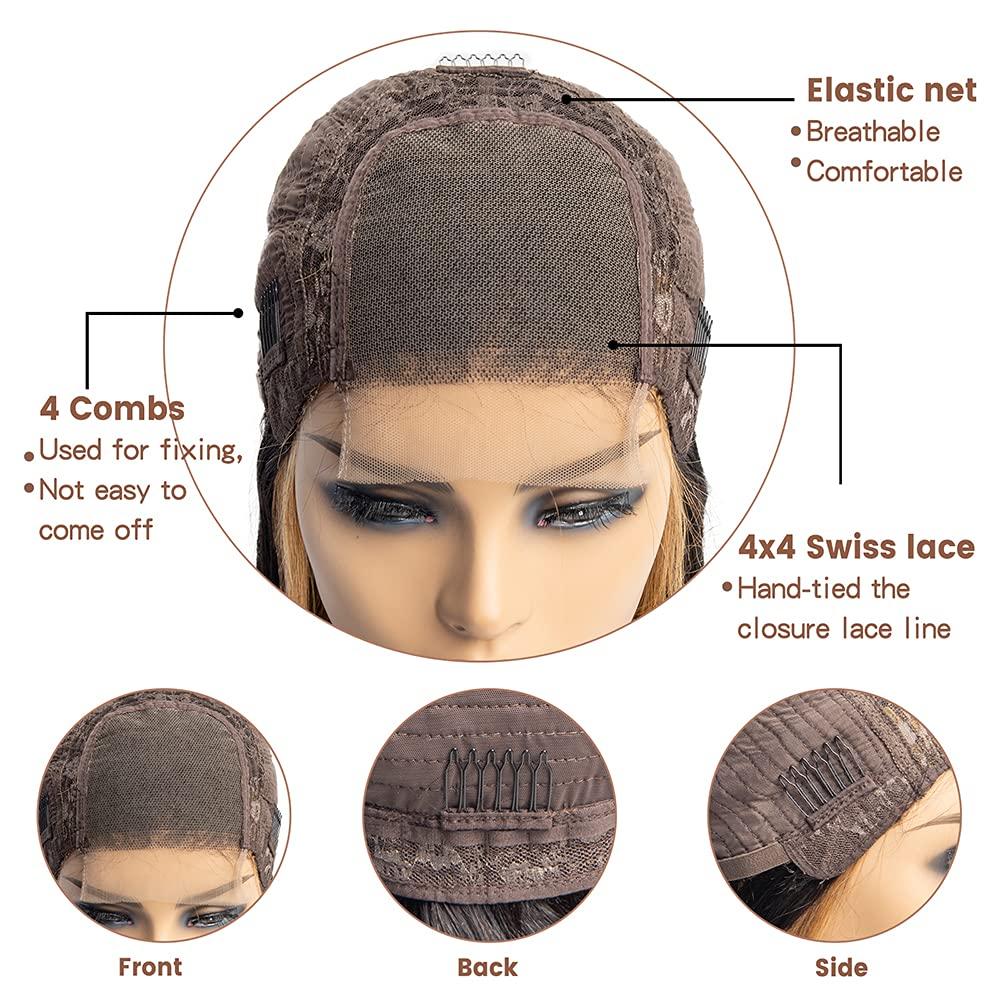
Full Lace Cap
The entire cap is made of lace, offering versatility and a natural hairline.
Lace Front Cap
Only the front portion is lace, providing a natural hairline while the rest is typically constructed with a stretchy material.
U-Part Cap
A U-shaped opening allows the wearer to blend their natural hair with the wig.
Monofilament Cap
Features a monofilament top for a realistic parting and comfort.
Construction
Wigs can be hand-tied or machine-sewn. Hand-tied wigs offer a more natural look as each hair is individually knotted onto the cap, while machine-sewn wigs are more cost-effective but may appear less natural. Proper cap type and construction choice depend on personal preferences and desired style.

Installing and Styling a 4×4 Lace Closure Wig
1. Preparation
Ensure your natural hair is clean and flat, either braided or cornrowed, to create a smooth base.
2. Secure the Wig Cap
Place the wig cap over your head and adjust it for a snug fit. Secure any loose hair.
3. Install the Wig
Position the 4×4 lace closure at your desired hairline. Use wig adhesive, glue, or sew-in methods for a secure attachment.
4. Cut and Style
Trim the excess lace and customize the hairline for a natural look. Style the wig with heat tools or products as needed.
5. Final Touches
Blend your natural hair with the wig and add accessories for a polished appearance.
Maintenance and Care
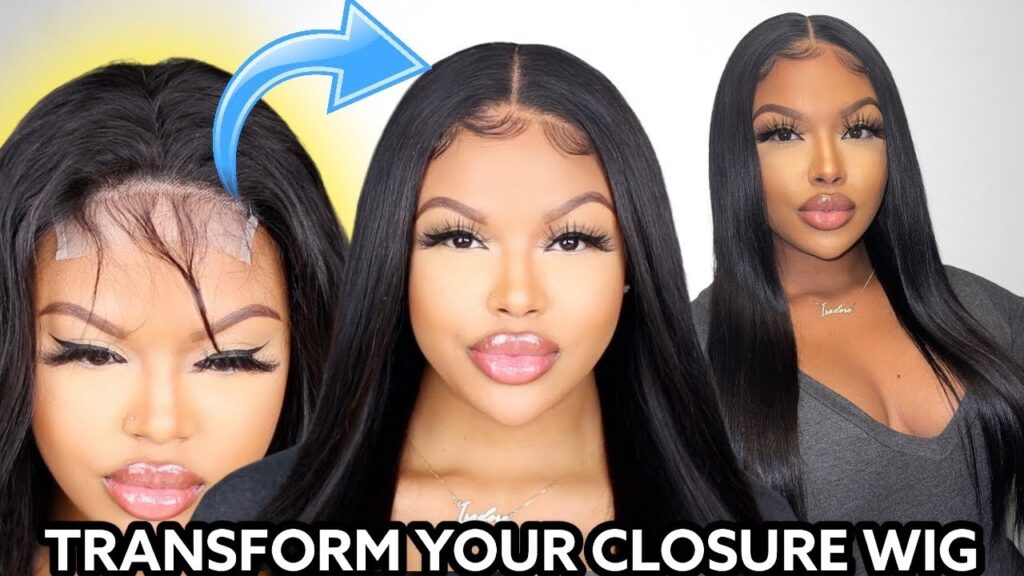
Daily Care
Gently brush or comb the wig to prevent tangles and maintain its shape.
Washing
Cleanse the wig with a sulfate-free shampoo and conditioner when it becomes dirty or loses its luster.
Conditioning
Use a wig-specific conditioner to keep the hair soft and manageable.
Storage
Store the wig on a wig stand or mannequin head to maintain its shape and prevent tangling.
Avoid Heat
Limit the use of heat styling tools to prevent damage. If needed, use a heat protectant.
Protect at Night
Wear a silk or satin bonnet or use a silk pillowcase to reduce friction and prevent tangling during sleep.
Professional Maintenance
Periodically consult a professional wig stylist for deep cleaning, repairs, and adjustments to ensure the wig’s longevity and natural appearance.
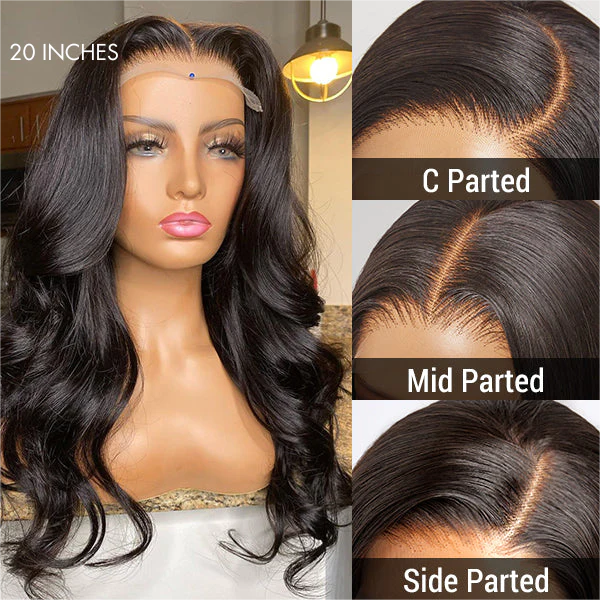
FAQs About Lace Clousure Wig
Is a 4×4 Lace Closure Good?
Yes, a 4×4 lace closure is considered good for achieving a natural and seamless look in wigs. It allows for versatile parting and a realistic hairline, making it a popular choice among wig wearers seeking a natural appearance and styling options.
What Are the Benefits of Closure Wigs?
Closure wigs offer several benefits, including a natural look, versatility in parting, and protection for natural hair. They create a seamless hairline, mimic real scalp, and are ideal for various hairstyles. Closure wigs also promote hair health by minimizing the need for heat styling and chemical treatments on natural hair.
How Long Does a 4×4 Closure Wig Last?
The lifespan of a 4×4 closure wig varies depending on factors like quality, maintenance, and frequency of wear. A high-quality wig with proper care can last 6 months to a year or even longer, while lower-quality wigs may have a shorter lifespan. Regular maintenance is key to extending its durability.
How Does 4×4 Closure Look?
A 4×4 closure looks like a square-shaped piece of lace with hair strands attached to it. When properly installed, it seamlessly blends with the wearer’s natural hairline, creating a realistic appearance with a defined parting space. It offers versatility for different parting styles, enhancing its natural look.
Which Is Better Lace Frontal or Closure?
The choice between a lace frontal and closure depends on personal preferences and styling goals. Lace frontals offer a larger, more versatile hairline but require more maintenance. Closures are smaller, provide a natural parting, and require less maintenance. The “better” option depends on the desired look and styling needs.
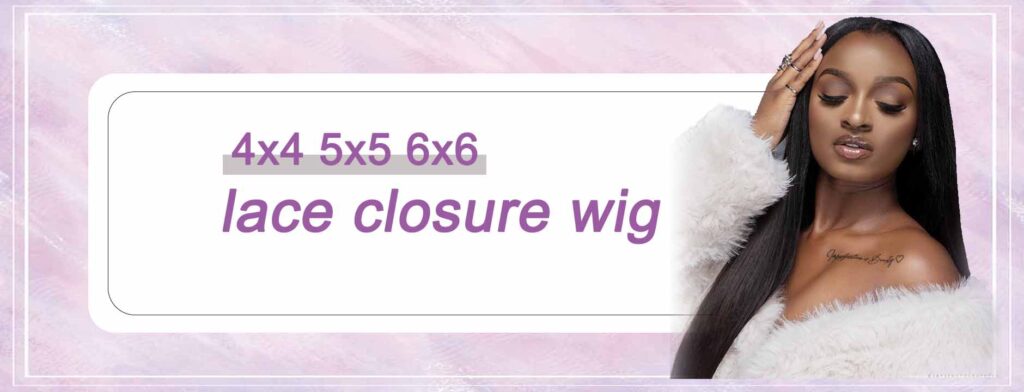
What are the different types of lace closures?
There are several types of lace closures, including:
4×4 Lace Closure
A square-shaped closure that offers a natural parting space.
5×5 Lace Closure
Slightly larger than the 4×4, providing more versatility in styling.
6×6 Lace Closure
A larger square closure, offering even more parting options.
What is the best size lace closure?
The best size lace closure depends on your personal preferences and styling needs. A 4×4 closure is popular for its natural parting, while larger sizes like 5×5 or 6×6 offer more styling versatility.


